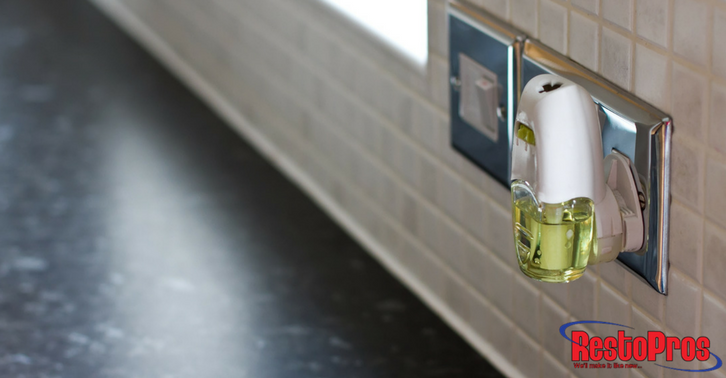 After damage to your home, needing to replace wallpaper and paint, damage to personal belongings, what is the worst thing about a flooded home or mold infestation? That musty odor that hangs around in the air. It’s evenmore difficult to get rid of if the weather is humid or the outside temperature is not right for opening the windows. Well you don’t have to just sit there and breath in the dank, musty scent of mold spores. And the good news is that the same methods you use to deodorize your home after a mold infestation can be used to clear the air for anything else.
After damage to your home, needing to replace wallpaper and paint, damage to personal belongings, what is the worst thing about a flooded home or mold infestation? That musty odor that hangs around in the air. It’s evenmore difficult to get rid of if the weather is humid or the outside temperature is not right for opening the windows. Well you don’t have to just sit there and breath in the dank, musty scent of mold spores. And the good news is that the same methods you use to deodorize your home after a mold infestation can be used to clear the air for anything else.
Modern Methods
Most people immediately reach for air freshening products such as candles, aerosol and non-aerosol sprays, scented oils. Most of these are simply cover-scents. They almost mask the old odor with a stronger ‘better’ smell. But often you’ll find that the mixture doesn’t last long enough and can aggravate allergies or, for some people, make breathing difficult. In fact, most modern air fresheners include trace (very tiny) amounts of toxic components that can affect breathing after extended or repeated exposure. Phthalates are the most common since they’re used as an accelerant that helps to carry the scent along with the spray or aerosol. Even unscented deodorizers contain some of these trace chemicals to help them work.
Traditional Deodorizers
Traditional methods for removing odors from your home are more robust but also a little more expensive. Most traditional deodorizers are absorbers that pull in the airborne particles carrying the sent. The best balance of cost and effectiveness is the charcoal deodorizer. While a little expensive, charcoal, when given access to open air in a room with air circulation will clear a room of odors provided that the source of the smell has been removed. Yes it takes a little longer, but charcoal won’t add extra smells to the room and isn’t an attempt to mask an odor which can lead to simply aggravating someone else’s sinuses in the first place.
Home-Made Deodorizers
Looking for a more budget-friendly way to remove a foul smell from your home? When opening a window won’t work, it’s time to turn to a few things you may already have in your pantry.
Lemons: fill a pan with water and lemon peels, allow the water to simmer and it will slowly fill your home with a better, natural smell. You can do the same thing with other items such as orange peels or cinnamon sticks too.
Baking Soda: while not as effective as charcoal, spreading baking soda over the affected area and cleaning it up after an hour or two will help to remove foul smells from most areas.
Eucalyptus: Both the leaves and the oil are effective here. The oil can be added to a water-based spray to clean an area or used to simmer on a pan. A branch of eucalyptus leaves can also be added to a room or closet to help deal with odors.
Vinegar: When you want true cleaning power and the ability to remove strong smells. Vinegar is a wonder for cleaning. Leaving a shallow bowl in a room with vinegar in it will help to deodorize a room (though the room will smell strongly of vinegar at first). You can also dampen a rag with white vinegar and wave it around the room to help clear the air faster. Of course, any combination of these methods is sure to help and you’ll get a step up if you start by cleaning the area using vinegar.
Don’t forget to follow RestoPros on Facebook, Twitter, LinkedIn, and Google+ for new Updates, News, and Discounts
